Quintana Roo, Rio Bec Region, Yucatán Peninsula, México.
Travel & Tour
Pictures, Photos, Images, & Reviews.
George & Eve DeLange
Google Map To The Dzibanche Archaeological Ruins.
Quintana Roo, Rio Bec Region, Yucatán Peninsula, Mexico.
Move The Map To Street View
& You Can Walk Around The Ruins !
Click On Any Of The Following Links By Amazon.Com
For Books Or Videos About The Mayan People In Mexico. No Obligation!
We Are Proud Of Our SafeSurf Rating!
Click On Any Of The Following Links By Amazon.Com
For Books Or Videos About Touring The Yucatán Peninsula In Mexico. No Obligation!

Part Of The Defensive Wall At Dzibanché Archaeological Ruins, Quintana Roo, México.
Photo Taken February, 2004.
Looking Toward The Ruins, From The Parking Area.
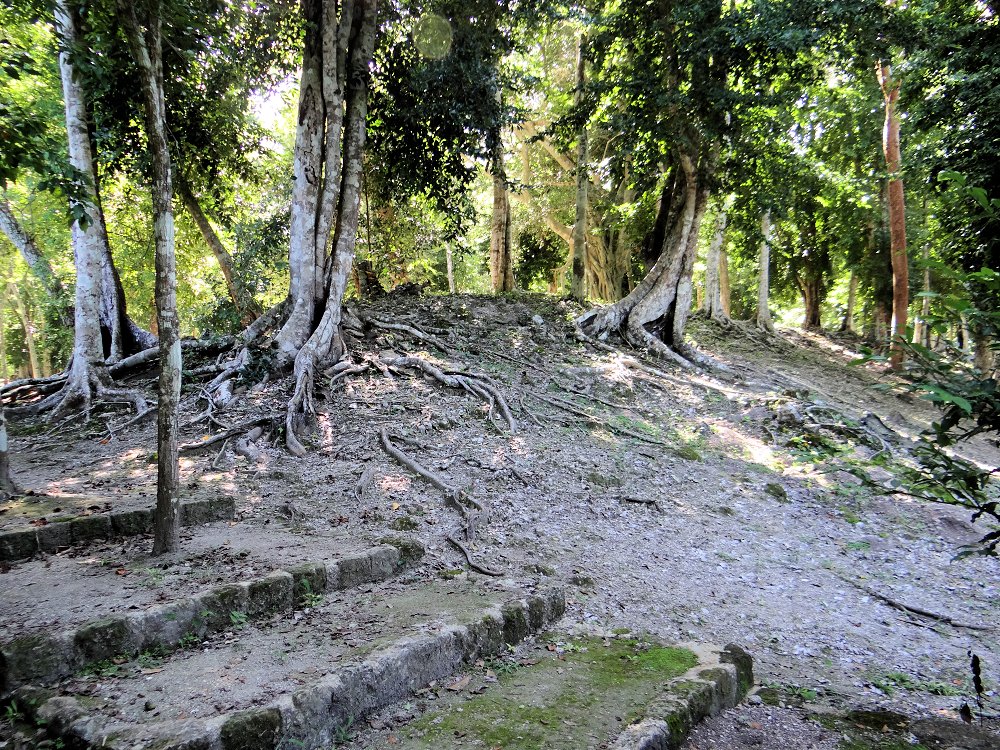
Part Of The Defensive Wall At Dzibanché Archaeological Ruins, Quintana Roo, México.
Photo Taken November 15, 2012.
Looking Back, After Entering The Ruins, From The Parking Area.
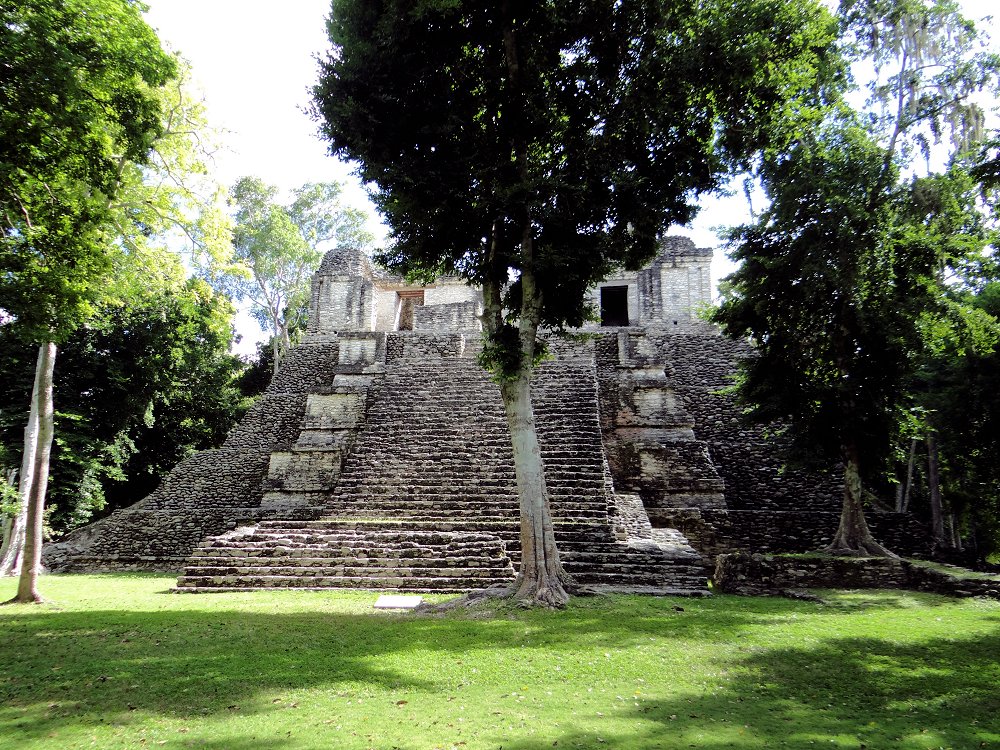
"Temple Of The Lintels" or "Temple Six." Dzibanché Archaeological Ruins, Quintana Roo, México.
Looking East At The Steps. A Lental Dated AD 733 Is Found In Right Hand (South) Tower.
Photo Taken November 15, 2012.
Lental From The "Temple Of The Lintels" or "Temple Six." Dzibanché Archaeological Ruins, Quintana Roo, México.
Lental Dated AD 733. Photo Courtesy: Wikipedia, the free encyclopedia.
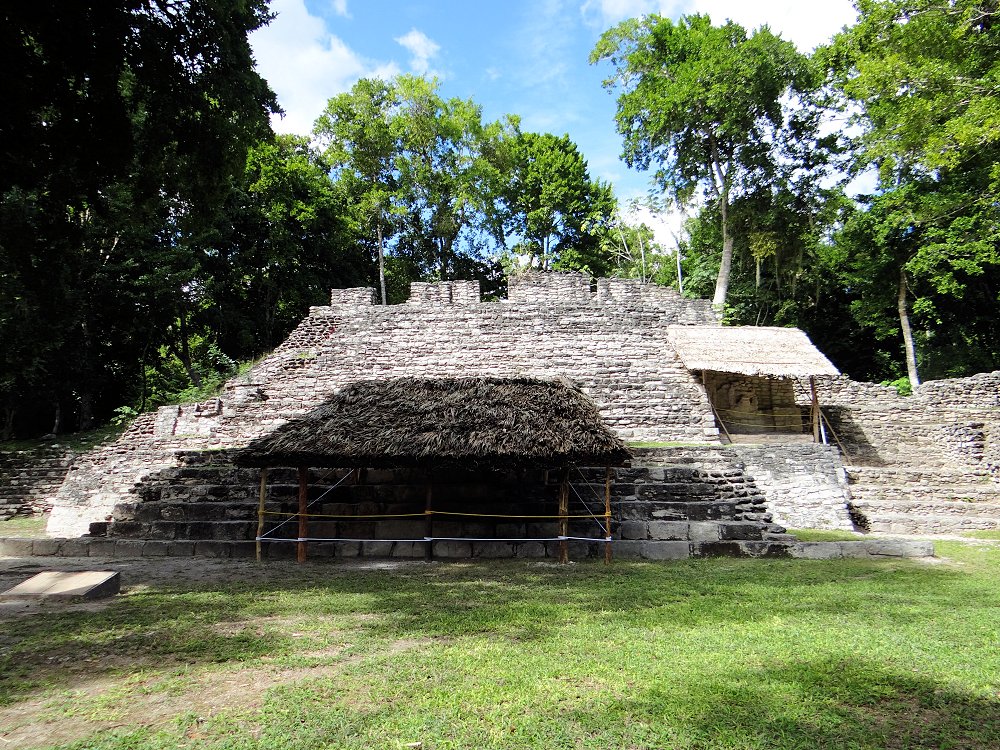
The "Temple Of The Captives" or "Structure 13." Dzibanché Archaeological Ruins, Quintana Roo, México.
Photo Taken November 15, 2012.
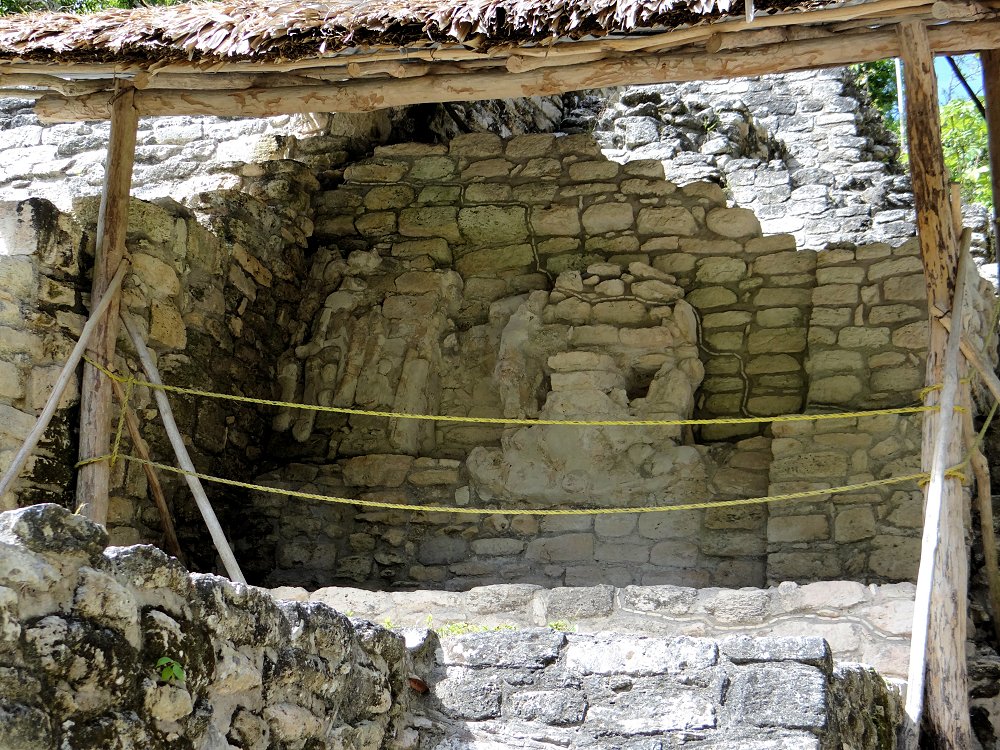
Mask On The "Temple Of The Captives" or "Structure 13." Dzibanché Archaeological Ruins, Quintana Roo, México.
Photo Taken November 15, 2012.
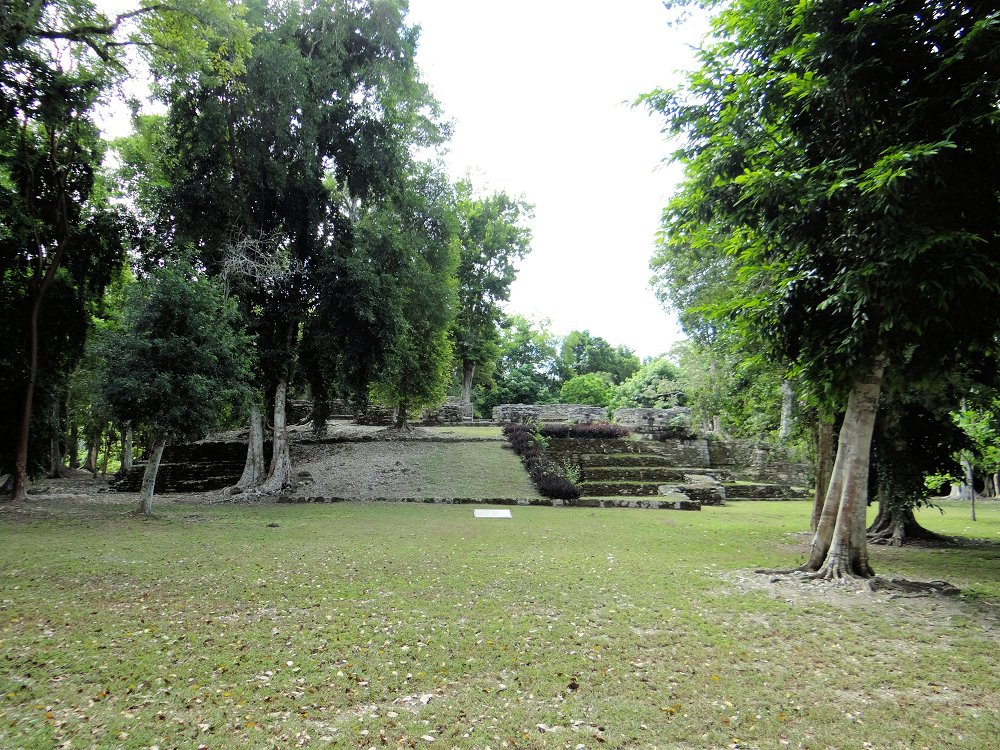
The "Pop Palace" or "Structure 11." Dzibanché Archaeological Ruins, Quintana Roo, México.
Photo Taken November 15, 2012.
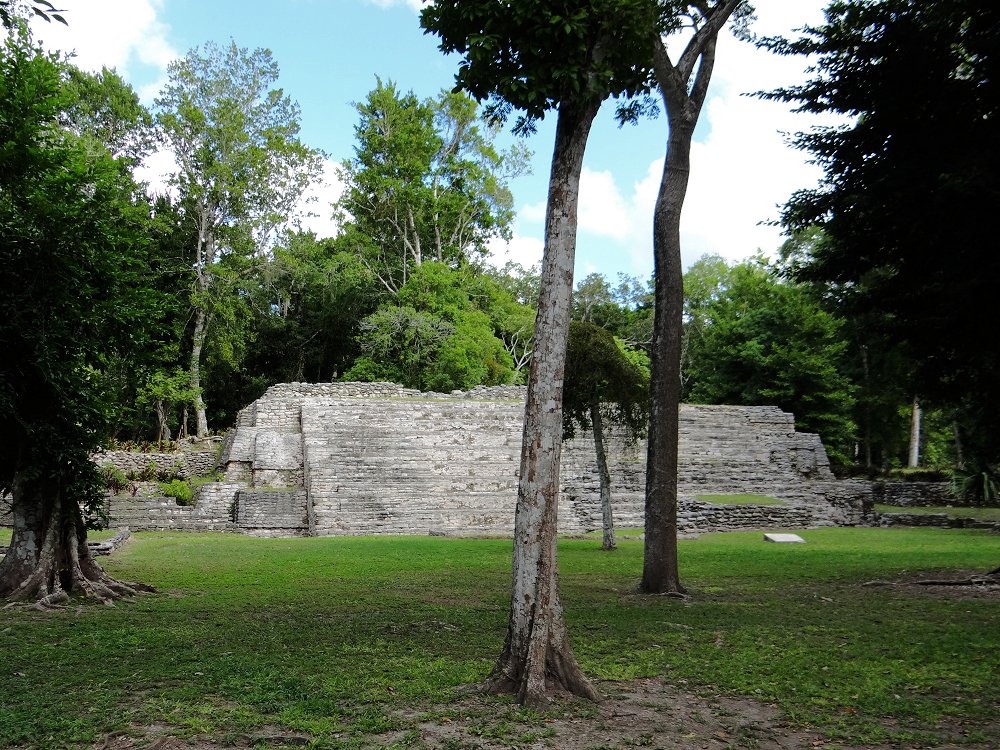
The "Temple of the Toucans." or "Structure 16." Dzibanché Archaeological Ruins, Quintana Roo, México.
Photo Taken November 15, 2012.
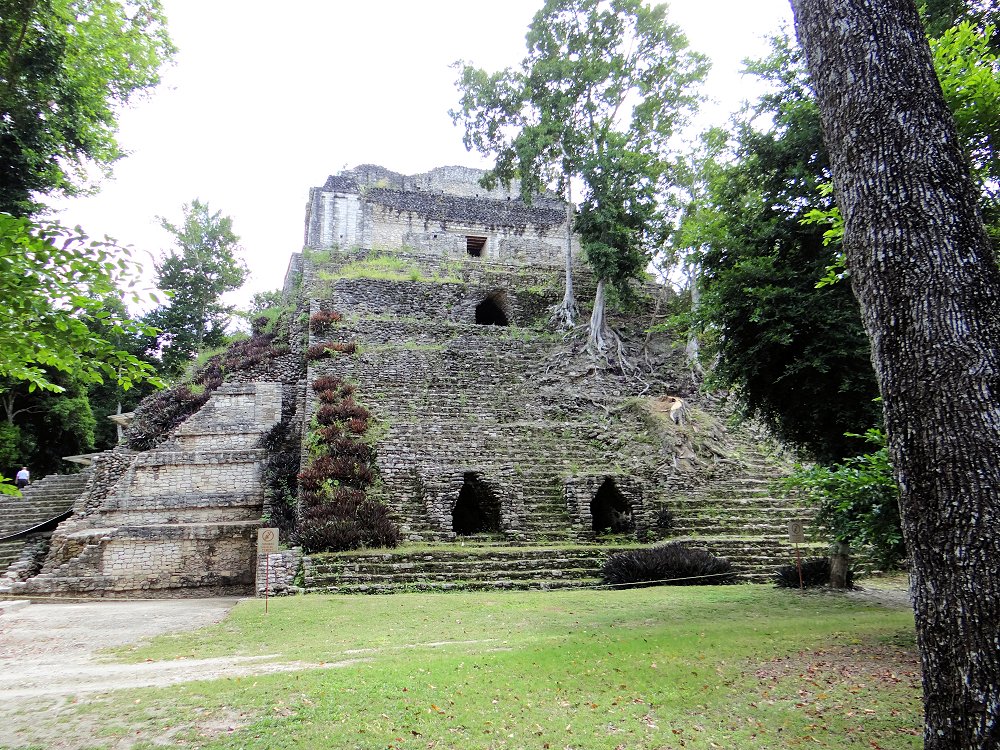
The Front Side (West Side) Of The "Temple of the Cormorants." or "Temple 2."
Dzibanché Archaeological Ruins, Quintana Roo, México. Photo Taken November 15, 2012.
Inside Was Found A Very Rich Tomb. Thus, This Tomb Is Called, The "Tomb Of The Lord Of Dzibanche."
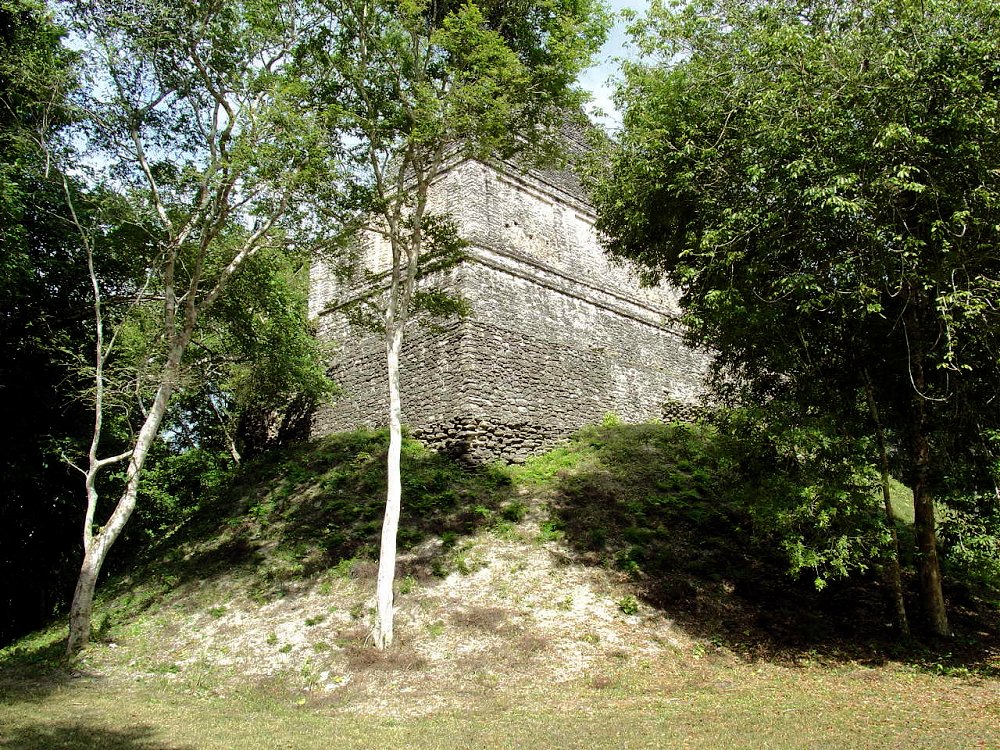
The Back Side (East Side) Of The "Temple of the Cormorants." or "Temple 2." From the Plaza Xibalbá.
Dzibanché Archaeological Ruins, Quintana Roo, México. Photo Taken February, 2004.

The "Temple Of The Owl." or "Temple 1." From the Plaza Xibalbá.
Dzibanché Archaeological Ruins, Quintana Roo, México. Photo Taken November 15, 2012.
For Books Or Videos About Touring The Yucatán Peninsula In Mexico. No Obligation!
 |
| Part Of The Defensive Wall At Dzibanché Archaeological Ruins, Quintana Roo, México. Photo Taken February, 2004. Looking Toward The Ruins, From The Parking Area. |
|---|
 |
| Part Of The Defensive Wall At Dzibanché Archaeological Ruins, Quintana Roo, México. Photo Taken November 15, 2012. Looking Back, After Entering The Ruins, From The Parking Area. |
|---|
 |
| "Temple Of The Lintels" or "Temple Six." Dzibanché Archaeological Ruins, Quintana Roo, México. Looking East At The Steps. A Lental Dated AD 733 Is Found In Right Hand (South) Tower. Photo Taken November 15, 2012. |
|---|
| Lental From The "Temple Of The Lintels" or "Temple Six." Dzibanché Archaeological Ruins, Quintana Roo, México. Lental Dated AD 733. Photo Courtesy: Wikipedia, the free encyclopedia. |
|---|
 |
| The "Temple Of The Captives" or "Structure 13." Dzibanché Archaeological Ruins, Quintana Roo, México. Photo Taken November 15, 2012. |
|---|
 |
| Mask On The "Temple Of The Captives" or "Structure 13." Dzibanché Archaeological Ruins, Quintana Roo, México. Photo Taken November 15, 2012. |
|---|
 |
| The "Pop Palace" or "Structure 11." Dzibanché Archaeological Ruins, Quintana Roo, México. Photo Taken November 15, 2012. |
|---|
 |
| The "Temple of the Toucans." or "Structure 16." Dzibanché Archaeological Ruins, Quintana Roo, México. Photo Taken November 15, 2012. |
|---|
 |
| The Front Side (West Side) Of The "Temple of the Cormorants." or "Temple 2." Dzibanché Archaeological Ruins, Quintana Roo, México. Photo Taken November 15, 2012. Inside Was Found A Very Rich Tomb. Thus, This Tomb Is Called, The "Tomb Of The Lord Of Dzibanche." |
|---|
 |
| The Back Side (East Side) Of The "Temple of the Cormorants." or "Temple 2." From the Plaza Xibalbá. Dzibanché Archaeological Ruins, Quintana Roo, México. Photo Taken February, 2004. |
|---|
 |
| The "Temple Of The Owl." or "Temple 1." From the Plaza Xibalbá. Dzibanché Archaeological Ruins, Quintana Roo, México. Photo Taken November 15, 2012. |
|---|
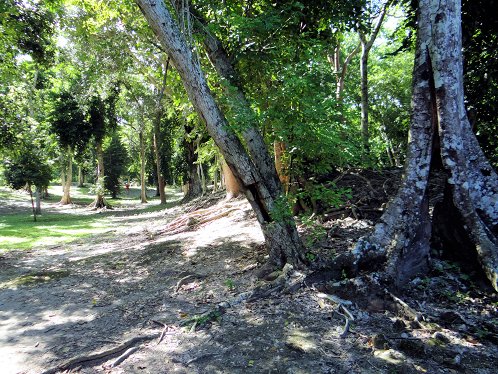 | 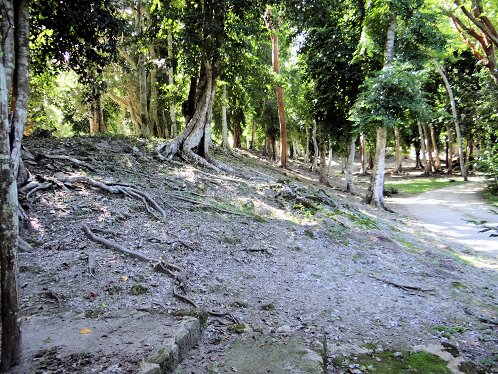 |
| Left Part Of The Defensive Wall At Dzibanché Archaeological Ruins. Quintana Roo, México. Photo Taken November 15, 2012. Looking Back, After Entering The Ruins, From The Parking Area. | Right Part Of The Defensive Wall At Dzibanché Archaeological Ruins. Quintana Roo, México. Photo Taken November 15, 2012. Looking Back, After Entering The Ruins, From The Parking Area. |
|---|---|
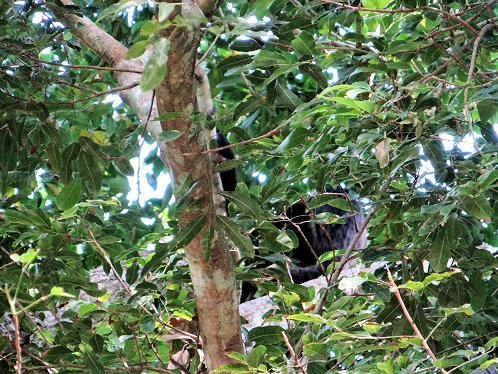 | 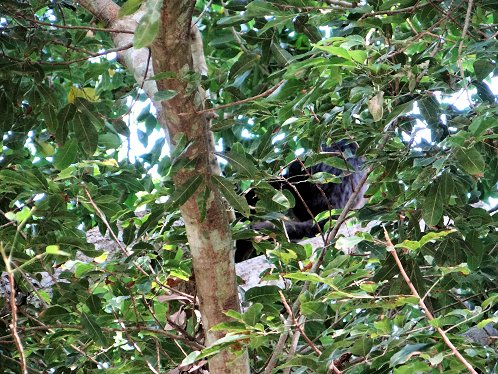 |
| Baby Howler Monkeys, Alouatta monotypic At Dzibanché Archaeological Ruins. Quintana Roo, México. Photo Taken November 15, 2012. Looking Back, After Entering The Ruins, From The Parking Area. | Baby Howler Monkeys, Alouatta monotypic At Dzibanché Archaeological Ruins. Quintana Roo, México. Photo Taken November 15, 2012. Looking Back, After Entering The Ruins, From The Parking Area. |
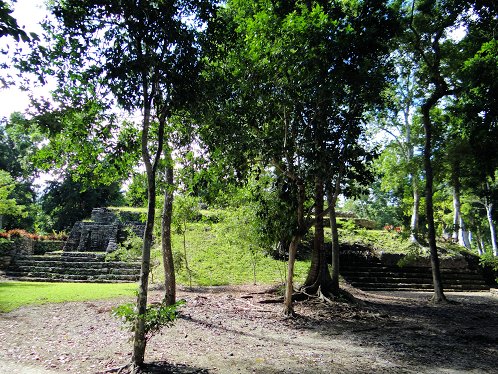 | 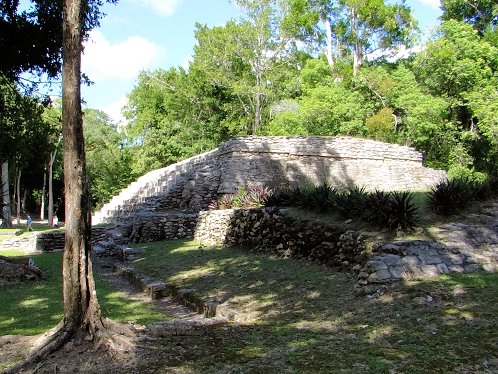 |
| Platform 3, Or North Palace. North Side. Dzibanché Archaeological Ruins. Quintana Roo, México. Photo Taken November 15, 2012. | Platform 3, Or North Palace. South Side. At Dzibanché Archaeological Ruins. Quintana Roo, México. Photo Taken November 15, 2012. |
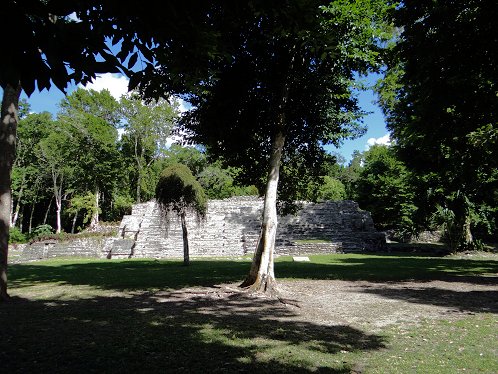 | 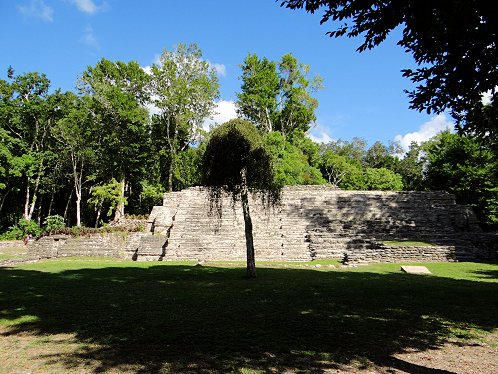 |
| Platform 4, Or South Palace. North Side. Dzibanché Archaeological Ruins. Quintana Roo, México. Photo Taken November 15, 2012. | Platform 4, Or South Palace. North Side. At Dzibanché Archaeological Ruins. Quintana Roo, México. Photo Taken November 15, 2012. |
Dzibanché, Quintana Roo, (pronounced "jee-ban-CHEH"). A Mayan ruin now considered in the Río Bec Region. A word about the Río Bec Region. The words Río Bec refer to a style of the temple pyramids which are located in the central Maya lowlands. The temple-pyramids are characterized by a unique architectural style that began to appear during the seventh century A.D. and continued into the early twelfth century A.D. The temple - pyramids usually have what is called a range-type of building with a similar looking, nonfunctional tower; on each of the opposit ends of the range-type building. As the height of the twin towers increases, the twin towers narrow; giving the illusion of being greater in height than they actually are. In addition, the twin-towers appear to have stairs along their faces leading to the temple that rests atop them. However, the steps are only a design motif that creates the illusion of functional stairs. The temples, which appear to be located on the singular platform at the top each of the Río Bec towers are solid masses of design stone, with no interior rooms, so they are inoperative as well. Also, there are Pseudo-doorways, built into niches, located at the fronts of the temples, giving the temple the appearance of having a functional door. The purpose of the Río Bec temple-pyramids is unknown at this time. But, they are pretty! Dzibanché, means "writing on wood", its name comes from the fact that Temple VI has contains a large lintel made of quebracho wood that bears eight glyphs that date to 618 AD. Dzibanché was a major site in this Mayan area during the Classic Period (300-900 A.D) and its inhabitants settled on some 40 sq. km. of hills surrounded by flatland. Throughout this area they built homes and buildings for worship, as well as public buildings which were the center of their community's social and economic life. The site's most important complex is made of several plazas surrounded by palaces and platforms from which temples rise that are decorated with Peten-style crests. The most notable of these plazas care Temples 1 and 2, as well as a Small Acropolis, called the "Unknown Building". A Ball Court is located away from the main structures of the civic-ceremonial complex. The Mayas tried to build their cities near water, and beside some natural water sources, this site contains several chultunes or underground excavations that serve as water collection structures. The "Must See" structures at Dzibanché are; the "Temple Of The Lintels," and the "Temple Of The Owl." To get to Dzibanché, travelers should take federal highway 186 same that leads to Kohunlich, turning off on the road to Morocoy village, and then six kilometers to the northeast in a dirt road and they will arrive at the archaeological site. Once we leave the parking area, we will walk over a slight incline, which is part of a defensive wall. A little further along the path, we will walk a bit through the forest, where we come across the first feature of great interest; called Building VI, or Temple of the Lintels, from which its name is derived. If you are facing Building VI's steps, you will be looking east. Building VI is also considered one of the most impressive. It is a pyramidal building fronted with a wide stairway and interesting stepped design. Climbing to the top of the temple, we find another temple with two vaulted galleries giving access into a single, long interior corridor. Here you can stand directly under the original lintel on the right (south) side of the temple. Looking up you can see a Maya calendrical inscription with the date working out to AD 733. The Temples base dates from the early Classic period (AD 300-600), while the temple is from the late Classic period (AD 600-900). The Temple of the Lintels is thought to have been influenced by the typical architectonical style of Teotihuacan near Mexico City. Next, we will follow the path east, past several unexcavated mounds. Then we arrive in a large open space, with some trees known as Plaza Gann, after the English medical doctor and archaeologist who explored the site in 1927, Thomas Gann. On our immediate right, we see a long, stepped platform. This is Structure 13, the Temple of the Captives, so-called because of several pictorial representations of prisoners. One sculpture of a prisoner is preserved beneath a straw canopy at the base of the temple. Evidence suggests that this building was gradually added to during Dzibanché's history. Then looking toward the south side of the plaza we see Platform 11, the "Pop Palace." It is not as remarkable as the other structures, simply being a platform with ruined walls. It is thought to have had a wooden temple on top of the platform. Looking across the plaza to the north, we see a similarly plain, stepped platform. It is Platform 16, or the "Temple of the Toucans." It also is thought to have had a wooden temple on top of the platform. Looking across the plaza to the north, northeast; we see a huge temple called; "Temple 2," or "Temple of the Cormorants." We now ascend a short flight of steps on the left of the "Temple of the Cormorants," that connects to the higher and larger Plaza Xibalbá. Here we can look back and see the massive back side of the "Temple of the Cormorants." We have a video on this page of the "Temple of the Cormorants," and parts of Plaza Gann. Now that we are in the higher and larger Plaza Xibalbá, we look to the east where we can see the largest structure at Dzibanché known as Structure 1, or the Temple of the Owl. It is of a similar design as the Temple of the Lintels - pyramidal with a double-designed temple, only is higher and built on a much grander scale. Please note, that there are two other nearby ruins that were found to be definately connected to Dzibanché. They are: nearby Conjunto Lamay, & Kinichna. There are links to both of these ruins at the bottom of this web page. We hope you enjoy our tour!
|
The Ing. Alberto Acuña Ongay International Airport (IATA: CPE, ICAO: MMCP), also known as Campeche International Airport, is the international airport located in Campeche, Campeche, Mexico. It handles the national and international air traffic of the city of Campeche. It's operated by Aeropuertos y Servicios Auxiliares, a federal government-owned corporation. There are several good hotels or motels in the Campeche area, and if you need a place to stay; Priceline.com can arrange that for you. In fact, we think they are the best way to do it! We also have links on this page, that will connect you directly with several of the best hotels in in the Campeche area. Hotels that we have personally used! We suggest getting a hotel, and then letting them arrange for either a car, or a tour of the Campeche area and/or the Río Bec Region. If you call their Concierge Services, ahead of your arrival, all of this can be pre-arranged for you. We have used this method, many times, when traveling in Mexico. We have found it to be safe and it works!!! We have never experienced a problem, doing it this way! Our first choice to stay while exploring this region is the Explorean Kohunlich, owned by: Fiesta Americana. It is a five star hotel in the Jungle! Awesome! We have personally, booked flights, hotels, and vacations, through Priceline.com and we can highly recommend them. Their website is very easy to use! We have some links to Priceline.com on this page, since they can arrange all of your air flights, hotels and car. We of course, appreciate your use of the advertising on our pages, since it helps us to keep our pages active.
|
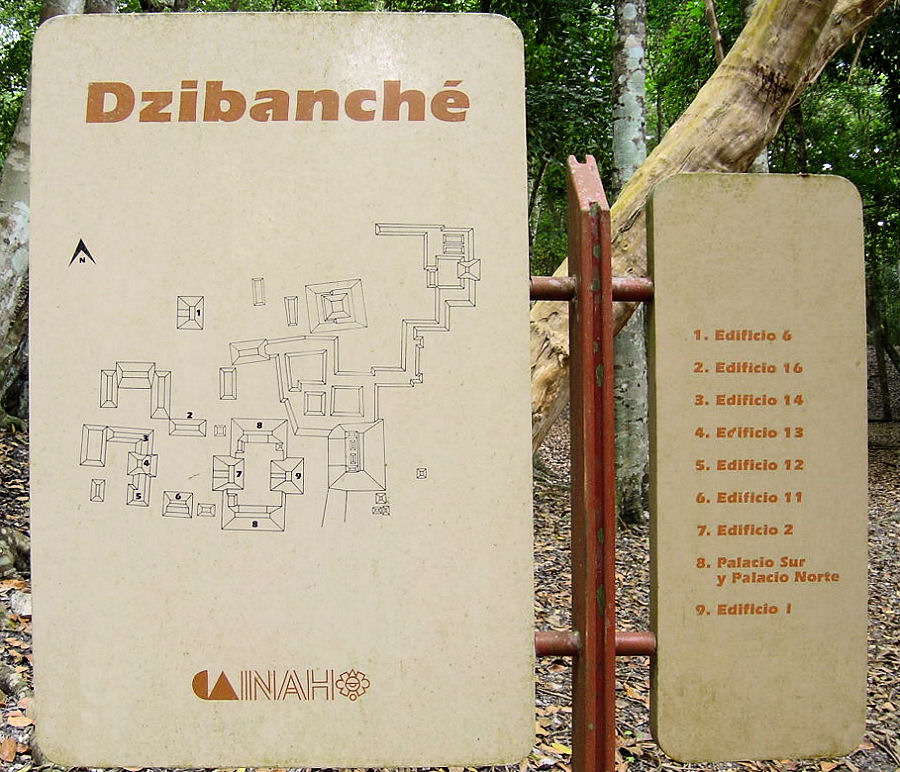 |
| Site Map Of Dzibanché Archaeological Ruins, Quintana Roo, México. |
|---|
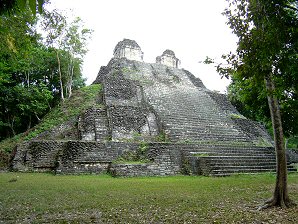 | 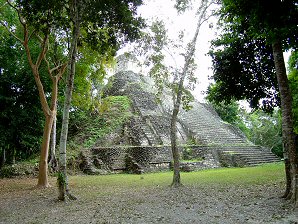 |
| Temple Of The Owl. | Temple Of The Owl. |
|---|---|
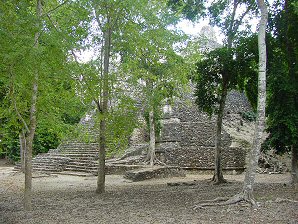 | 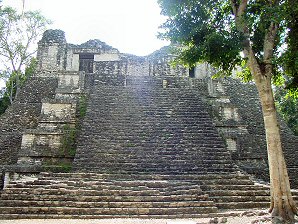 |
| Temple Of The Lintels. Temple Six. | Temple Of The Lintels. Temple Six. |
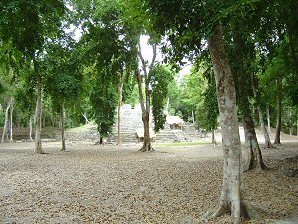 | 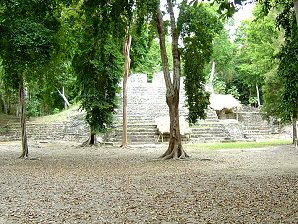 |
| Temple Of The Captives. | Temple Of The Captives. |
 | |
| Temple Of The Captives. | Temple Of The Captives. |
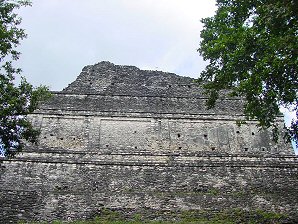 | 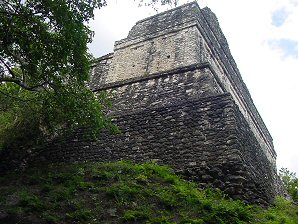 |
| Temple of the Cormorants. | Temple of the Cormorants. |
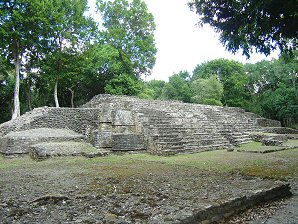 | 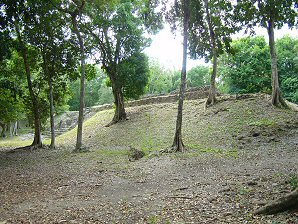 |
| Temple Of The Toucans. | Pop Palace. |
We Are Proud Of Our SafeSurf Rating!
Click On Any Of The Following Links By Amazon.Com
For Books Or Videos About Touring In Mexico. No Obligation!
Here Are Some Links To The Very Best & Most Popular Items Sold On Amazon.Com
To Learn More! Click The Links Below. No Obligation, Of Course!
To Learn More! Click The Links Below. No Obligation, Of Course!
Other Rio Bec Region Ruins!

